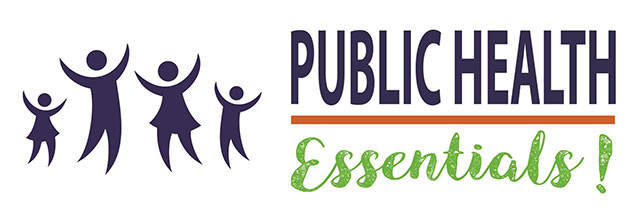By Kari Bray / Snohomish Health District
It has now been 100 days since the first reported case of COVID-19 in the U.S. was confirmed here in Snohomish County.
A lot has changed since January 20. From Day 1, we talked about this as a rapidly evolving situation. People probably got tired of hearing it. Aside from reminders to please, please wash your hands and stay home if you’re feeling sick, “rapidly evolving situation” was among our most frequently used phrases.
We know the drastic nature of this pandemic and the measures taken to curb it, along with many changes in a relatively short amount of time, can make it difficult for people to feel confident in the information they’re getting.
We hear and see your questions. We understand the frustration. Looking back, it’s easy to wonder how the risk to the general U.S. public was considered low two-and-a-half months ago but now people are staying home en masse from work and activities to prevent deaths.
The short explanation is this: With a new virus spreading on a global scale, the situation does change very quickly.
Watch: Novel Coronavirus: The First 100 Days
We ask that you continue to turn to reliable sources for health and safety information. The Snohomish Health District is part of a countywide emergency response effort to bring partners together and provide accurate information to our community, whether it’s what to do if you think you were exposed to COVID-19 or where and how to donate cloth face covers.
And if you become worried or angry because the information and recommendations for today look different than the guidance from a month ago – or even from a week ago – please understand that adapting and changing is part of this response. It has to be. Our knowledge of the virus, our testing capacity, and our data collection and analysis have all increased. Meanwhile, our understanding of COVID-19—how it spreads, how it makes you ill, how to protect ourselves—is growing with every passing day. The measures we take and the guidance we provide must reflect all that.
The topic of cloth face covers is a good example. It wasn’t necessary to wear a cloth face cover to the grocery store when there was one known case in the county and no known community transmission. Wearing a cloth face cover is important now, though. We know there is community transmission throughout the county and the nation, and we also know that people with mild or no symptoms can spread the illness. Cloth face covers can help contain respiratory droplets that might spread the virus in locations where people aren’t able to maintain distance.
It’s worth remembering that this virus was first identified in humans in December 2019 – almost five months ago. One month later, we had a case confirmed here. When disease investigators were interviewing the first local patient and notifying close contacts, the virus and disease didn’t have official names yet, and wouldn’t for another three weeks. Terms like “social distancing” and “flattening the curve” weren’t yet part of our community’s everyday discussion.
Initial efforts focused on containing the virus and allowing time for our healthcare systems and other partners to prepare for the possibility of more widespread transmission. The first detected case of community transmission in Snohomish County was announced on February 28, a high school student with no known travel or close contact to a confirmed case. The number of cases in the region continued to increase quickly thereafter. Over the next week, emergency declarations were issued at the state and local level and a Snohomish County man in his 40s died, the first known COVID-19 death of a county resident.
Within two weeks gatherings had been prohibited, schools closed, and non-essential business activity halted. By March 23, a statewide “Stay Home, Stay Healthy” order was announced. Life as usual wasn’t usual at all. People who could work remotely were scheduling virtual meetings or processing online orders for products. Essential workers put in long hours to make sure core services weren’t disrupted. Teachers and parents began teaming up on efforts to educate kids from home, and schools stood up food programs for children who need access to regular meals. We could order to-go from our favorite restaurant but couldn’t sit down inside for lunch or dinner. None of us has seen a barber or stylist in at least a month. Birthday parties, travel plans, holiday celebrations, family dinners – a long list of events were canceled or modified because we aren’t gathering in person. People were laid off from work, and a number are still uncertain when or if they’ll be able to return.
While the impact of social distancing began to reap benefits in reduced numbers of cases and hospitalizations – the oft-mentioned “flattening the curve” – the economic hardship began to be felt keenly, as well, and that hardship remains for most.
We do know that the social distancing measures have reduced the spread of this disease.
“The ‘Stay Home, Stay Healthy’ orders have helped stabilize the system here in Snohomish County,” said Dr. Chris Spitters, Health Officer for the Snohomish Health District. “In fact, they are likely the chief responsible reason that we have flattened the curve and appear to be coming down over the past few weeks. We are not out of the woods and we could quickly go back in the wrong direction if we move too quickly or without adequate plans in place to detect and control further transmission.”
And even with adequate plans in place to suppress COVID-19, it is conceivable that transmission will increase weeks to months down the road and require at least some level of increased social distancing again on one or more occasions before our struggle with this virus is over.
Our priority throughout this has been the health and safety of the people of Snohomish County. We aim to provide the best information we have available and to tamp down misinformation. That sometimes means we also have to be honest and say “We don’t know yet,” “At this time,” “This may change soon” or “We’re working on that.”
This holds true as our community looks to the future. One of the biggest questions right now is: When exactly will life be closer to normal? The answer: We don’t know for sure yet, things may change, and, yes, we are working on that. The follow-up to that is, at this time, the community will need to revisit what “normal” is, probably for many months to come. We’ll all be working together to develop new normals.
To modify stay home measures and increase business and activities, certain steps, supplies and capabilities are needed, as well as state and county coordination. Among the needs are:
• increased testing capacity and ability to get results more quickly
• increased contact tracing of cases and close contacts so we are able to address local outbreaks and quarantine cases moving forward
• capacity to continue isolating and quarantining those who cannot do so at home.
We also need to make sure our healthcare system, first responders, long-term care facilities and others on the front lines have enough personal protective equipment (PPE) as well as staffing and other supplies so that they can adequately take care of COVID-19 and other patients.
Public health measures will need to be maintained, including frequent handwashing and sanitation of high-touch surfaces. And some form of social distancing will likely be part of our reality for the foreseeable future. Measures may be modified multiple times to respond to changes in our knowledge of the virus, our ability to combat it, and the nature of transmission in our communities.
Thank you for all you have done in the first 100 days to help reduce the spread of this illness and save lives. Your sacrifices do not go unnoticed, and they are appreciated. Each of us makes a contribution with every handwashing, every trip deferred, every day spent at home, every helpful gesture toward an elderly or vulnerable neighbor.
Stay informed. Stay healthy. Stay strong.
The Public Health Essentials! blog highlights the work of the Snohomish Health District and shares health-related information and tips.
Talk to us
> Give us your news tips.
> Send us a letter to the editor.
> More Herald contact information.

























